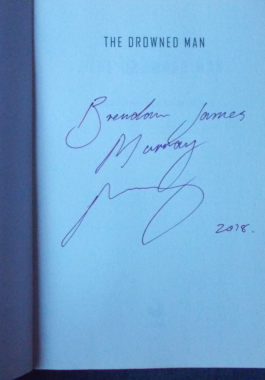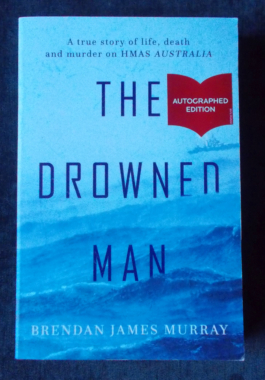-
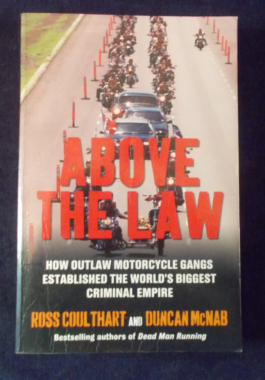 A forensic examination of the global future of organised crime - now being operated on a massive scale by outlaw motorcycle gang - and the difficulties faced by the Australian police in tackling the burgeoning crime empire that outlaw motorcycle gangs are developing in Australia and wherever else biker gangs flourish. It's a hard and chilling look at the global future of organised crime and reveals that the world's most successful criminal empire is now being operated on a massive scale by outlaw motorcycle gangs - an empire that is growing in power, reach and ruthlessness, far surpassing the threats posed by the Mafia, Russian syndicates, Chinese Triads and Japanese Yakuza. Outlaw motorcycle gangs are now being acknowledged as the greatest current organised crime threat with an international empire that is sophisticated, bloody and brutal. It is also both strategic and opportunistic - where they cannot dominate, they broker alliances. Here is how it all started: the turf wars that were fought, the deals that were done, and how the sea of cash that was earned is now being legitimised. It also reveals how law enforcement at an international level is losing the battle against the gangs. Using exclusive insider sources on four continents, this is the first contemporary account of one of the biggest criminal stories of our time.
A forensic examination of the global future of organised crime - now being operated on a massive scale by outlaw motorcycle gang - and the difficulties faced by the Australian police in tackling the burgeoning crime empire that outlaw motorcycle gangs are developing in Australia and wherever else biker gangs flourish. It's a hard and chilling look at the global future of organised crime and reveals that the world's most successful criminal empire is now being operated on a massive scale by outlaw motorcycle gangs - an empire that is growing in power, reach and ruthlessness, far surpassing the threats posed by the Mafia, Russian syndicates, Chinese Triads and Japanese Yakuza. Outlaw motorcycle gangs are now being acknowledged as the greatest current organised crime threat with an international empire that is sophisticated, bloody and brutal. It is also both strategic and opportunistic - where they cannot dominate, they broker alliances. Here is how it all started: the turf wars that were fought, the deals that were done, and how the sea of cash that was earned is now being legitimised. It also reveals how law enforcement at an international level is losing the battle against the gangs. Using exclusive insider sources on four continents, this is the first contemporary account of one of the biggest criminal stories of our time. -

Fatty: Andy Edmonds
$12.00Many people remember Roscoe Arbuckle as 'the fat comedian who raped that girl'. He was one of the highest paid actors of his day and Hollywood was at his feet. On September 5 1921 he threw a lavish party to celebrate his $3 million Paramount contract. It got wildly out of hand and ended abruptly when a starlet named Virginia Rappé let out a terrifying scream. Rappé died five days later and Arbuckle was charged with first-degree murder . Three trials later, he was finally acquitted - and by then his multi million dollar career was devastated and his life was ruined. Recreating the glittering Hollywood of the 1920s, Edmonds draws on new and hitherto unpublished evidence to determine what really happened on that fateful day. Illustrated with photographs. -
 London, 1910 - the city is rocked by its first encounter with foreign gangsters. In December, a group of Russian anarchists were surprised while burgling a jeweller's shop in Houndsditch. They shot and killed three policemen and wounded two others. Within two weeks, most of the gang had been captured. Then the police were informed that the last two members of the gang were hiding at 100 Sidney Street. The police called in the military, local residents were evacuated and the firefight raged for six hours, culminating in the burning of the house and the discovery of the two agitators' bodies in the ruins. On New Year's Day, Leon Beron, a middle-aged Russian Jew, was found battered to death on Clapham Common. Knife cuts on his cheeks, inflicted after death, formed the shape of a rough 'S' - rumour said it was the revenge murder of an informer, 'S' being the initial letter for 'spy' in both Russian and Polish. Steinie Morrison, who had been seen in his company the night before, was arrested and charged with Beron's murder, and sentenced to hang. This was later commuted to life in prison. Morrison protested the change of sentence and for the next ten years, demanded that the original sentence be carried out, proclaiming his innocence and staging hunger strikes. He never changed his story, not even by the smallest detail, and died ten years later in prison. Was an innocent man convicted? And did the murder of Beron have any connection to the Siege of Sidney Street? With black and white photographs.
London, 1910 - the city is rocked by its first encounter with foreign gangsters. In December, a group of Russian anarchists were surprised while burgling a jeweller's shop in Houndsditch. They shot and killed three policemen and wounded two others. Within two weeks, most of the gang had been captured. Then the police were informed that the last two members of the gang were hiding at 100 Sidney Street. The police called in the military, local residents were evacuated and the firefight raged for six hours, culminating in the burning of the house and the discovery of the two agitators' bodies in the ruins. On New Year's Day, Leon Beron, a middle-aged Russian Jew, was found battered to death on Clapham Common. Knife cuts on his cheeks, inflicted after death, formed the shape of a rough 'S' - rumour said it was the revenge murder of an informer, 'S' being the initial letter for 'spy' in both Russian and Polish. Steinie Morrison, who had been seen in his company the night before, was arrested and charged with Beron's murder, and sentenced to hang. This was later commuted to life in prison. Morrison protested the change of sentence and for the next ten years, demanded that the original sentence be carried out, proclaiming his innocence and staging hunger strikes. He never changed his story, not even by the smallest detail, and died ten years later in prison. Was an innocent man convicted? And did the murder of Beron have any connection to the Siege of Sidney Street? With black and white photographs. -
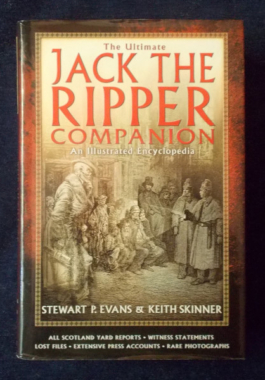 This really is the ultimate for Ripperologists - an encyclopedic work, solidly researched and profusely illustrated, collated from all the known and still-existing official records and supplemented by contemporary press reports. It presents. for the first time in one volume, a prime-source reference book on the eleven shocking prostitute murders that took place in the East End of London between 1888 and 1891. While there is no doubt that the Whitechapel Murders, as they were classified by Scotland Yard, were committed by more than one person, no one knows how many of the killings can be attributed to a single culprit. More than one murderer wore the guise of Jack the Ripper, and the identities of all suspects to this day remain unknown. Divorcing the facts of the Ripper case from the myths that have proliferated in fiction and film, this is a factual, documented narrative of the entire series of crimes, their forensic evidence, the official suspects and possible accomplices, police reports, inquests, newspaper articles of the day and rare photographs.
This really is the ultimate for Ripperologists - an encyclopedic work, solidly researched and profusely illustrated, collated from all the known and still-existing official records and supplemented by contemporary press reports. It presents. for the first time in one volume, a prime-source reference book on the eleven shocking prostitute murders that took place in the East End of London between 1888 and 1891. While there is no doubt that the Whitechapel Murders, as they were classified by Scotland Yard, were committed by more than one person, no one knows how many of the killings can be attributed to a single culprit. More than one murderer wore the guise of Jack the Ripper, and the identities of all suspects to this day remain unknown. Divorcing the facts of the Ripper case from the myths that have proliferated in fiction and film, this is a factual, documented narrative of the entire series of crimes, their forensic evidence, the official suspects and possible accomplices, police reports, inquests, newspaper articles of the day and rare photographs. -

Crime Scene: Esther McKay
$22.00Day after day my life was consumed by killings, distress and gruesome sites, each one adding another piece to an ever-growing mosaic that seemed to be made up of bloodied disposable gloves, plastic bags and human waste... When Esther McKay, an idealistic young constable with the NSW police, entered the tough, male-dominated world of forensic investigation, she was determined to hold her own. She soon found herself at deeply confronting crime scenes, often working alone and without supervision. After years of long, lonely, exhausting days and nights, and following a particularly harrowing high-profile case involving the disappearance of two young boys, Esther had a break-down and was diagnosed with post-traumatic stress disorder. Esther McKay takes us inside the life of a forensic investigator, and reveals as never before the extraordinary demands and dangers of forensic work. -
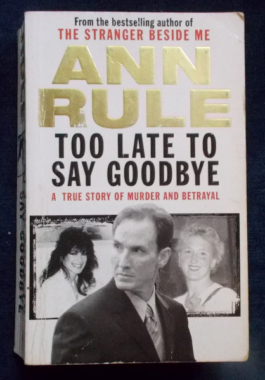 Beautiful Jenn Corbin appeared to have it all: two dear little boys, a posh home in one of the upscale suburbs of Atlanta, expensive cars, a plush houseboat and a husband - Dr. Bart Corbin, a successful dentist - who was tall, handsome, and brilliant. Then in December 2004, Jenn was found dead with a bullet in her head. Apparently a suicide. But Gwinnett County detective Marcus Head was not totally convinced, nor was Jenn's family, who could not believe she would take her own life. Only later would detectives learn that another beautiful woman in Dr. Corbin's past had been found dead in exactly the same way - and who had also been ruled a suicide...
Beautiful Jenn Corbin appeared to have it all: two dear little boys, a posh home in one of the upscale suburbs of Atlanta, expensive cars, a plush houseboat and a husband - Dr. Bart Corbin, a successful dentist - who was tall, handsome, and brilliant. Then in December 2004, Jenn was found dead with a bullet in her head. Apparently a suicide. But Gwinnett County detective Marcus Head was not totally convinced, nor was Jenn's family, who could not believe she would take her own life. Only later would detectives learn that another beautiful woman in Dr. Corbin's past had been found dead in exactly the same way - and who had also been ruled a suicide... -
 In the years between 1860 and 1880, dozens of bushrangers, some bold and famous, some little more than petty thieves, rampaged across the New South Wales and Victorian countryside - looting and murdering, bailing up travellers, harassing police, terrorising settlers. Perhaps the most famous of these in the 1860s was a handsome young man named Ben Hall, the first official outlaw under a new Act, shot dead by police in 1865. Other members of his gang, "Flash" Johnny Gilbert, Johnny Vane, O'Meally and Dunn, were all captured or shot by their pursuers. Also outlawed were Frederick Lowry, the ferocious Daniel Morgan, and Fred Ward, better known throughout New South Wales as "Thunderbolt". Finally, in this second volume of his History of Australian Bushranging, Charles White examines at length the incredible story of the Kelly Gang - Ned, Dan, Steve Hart and Joe Byrne.
In the years between 1860 and 1880, dozens of bushrangers, some bold and famous, some little more than petty thieves, rampaged across the New South Wales and Victorian countryside - looting and murdering, bailing up travellers, harassing police, terrorising settlers. Perhaps the most famous of these in the 1860s was a handsome young man named Ben Hall, the first official outlaw under a new Act, shot dead by police in 1865. Other members of his gang, "Flash" Johnny Gilbert, Johnny Vane, O'Meally and Dunn, were all captured or shot by their pursuers. Also outlawed were Frederick Lowry, the ferocious Daniel Morgan, and Fred Ward, better known throughout New South Wales as "Thunderbolt". Finally, in this second volume of his History of Australian Bushranging, Charles White examines at length the incredible story of the Kelly Gang - Ned, Dan, Steve Hart and Joe Byrne. -
 On April 4th, 1968, Dr. Martin Luther King, Jr. stepped out onto the balcony of the Lorraine Motel in Memphis, Tennessee, and into his killer's line of fire. One shot ended Dr. King's life and forever changed the course of American history - setting into motion a massive cover-up that has withstood a quarter-century of scrutiny. Now, after 18 years of intensive investigation, William F. Pepper tears away the veil of subterfuge that has hidden the truth of King's death - proving the innocence of convicted assassin James Earl Rayand revealing the cabal of government leaders and organised crime figures that masterminded the assassination of one of the most influential leaders of our age. The author was an associate of Dr. King and executive director of the independent political coalition that hoped to put King forward as a third party presidential candidate in 1968. After the murder, Pepper walked away from politics. But in 1977. Reverend Ralph Abernathy asked Pepper to interview James Earl Ray. Initially sceptical, Pepper became convinced that Ray was innocent of the crime and that Ray had always claimed, he had been manipulated by a man named Raul and was the victim of a set-up. But who was behind the set-up - and why?
On April 4th, 1968, Dr. Martin Luther King, Jr. stepped out onto the balcony of the Lorraine Motel in Memphis, Tennessee, and into his killer's line of fire. One shot ended Dr. King's life and forever changed the course of American history - setting into motion a massive cover-up that has withstood a quarter-century of scrutiny. Now, after 18 years of intensive investigation, William F. Pepper tears away the veil of subterfuge that has hidden the truth of King's death - proving the innocence of convicted assassin James Earl Rayand revealing the cabal of government leaders and organised crime figures that masterminded the assassination of one of the most influential leaders of our age. The author was an associate of Dr. King and executive director of the independent political coalition that hoped to put King forward as a third party presidential candidate in 1968. After the murder, Pepper walked away from politics. But in 1977. Reverend Ralph Abernathy asked Pepper to interview James Earl Ray. Initially sceptical, Pepper became convinced that Ray was innocent of the crime and that Ray had always claimed, he had been manipulated by a man named Raul and was the victim of a set-up. But who was behind the set-up - and why? -
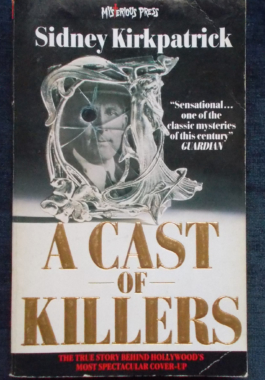 On February 1, 1922, the distinguished silent-film director William Desmond Taylor was shot dead in his Los Angeles bungalow. Reports of strange activities at the scene circulated soon after. When the police arrived, the head of Paramount Studios was burning a bundle of papers in the fireplace, and a well-known actress was searching the house for letters she claimed were hers. Despite a full-scale investigation - at one time there were over 300 suspects - the case was never solved; to this day it has remained a lingering Hollywood scandal. In 1967, more than forty years after Taylor's death, director King Vidor felt determined to solve the mystery which had haunted him throughout his career. He wanted to make a film about it. Through his intimate knowledge of both the studios and the stars, he succeeded - where dozens of professional detectives had failed - in discovering the identity of the murderer. But his findings were too explosive. He decided he could never go public and locked his evidence away. After Vidor's death in 1982, Sidney D. Kirkpatrick, Vidor's authorised biographer, gained access to the evidence and reconstructed the amazing story of Taylor's murder and Vidor's investigation. With a cast of suspects that includes the actress Mabel Normand, a reputed drug addict; the beautiful ingénue, Mary Miles Minter; Mary's domineering mother, Charlotte Shelby; Taylor's homosexual houseman; and Taylor's secretary, who bore an uncanny resemblance to Taylor's mysteriously elusive brother, this true crime story has all the elements of a classic murder mystery. Covered up for more than half a century, the full story can now be told in all its riveting, shocking detail. Contains black and white photographs.
On February 1, 1922, the distinguished silent-film director William Desmond Taylor was shot dead in his Los Angeles bungalow. Reports of strange activities at the scene circulated soon after. When the police arrived, the head of Paramount Studios was burning a bundle of papers in the fireplace, and a well-known actress was searching the house for letters she claimed were hers. Despite a full-scale investigation - at one time there were over 300 suspects - the case was never solved; to this day it has remained a lingering Hollywood scandal. In 1967, more than forty years after Taylor's death, director King Vidor felt determined to solve the mystery which had haunted him throughout his career. He wanted to make a film about it. Through his intimate knowledge of both the studios and the stars, he succeeded - where dozens of professional detectives had failed - in discovering the identity of the murderer. But his findings were too explosive. He decided he could never go public and locked his evidence away. After Vidor's death in 1982, Sidney D. Kirkpatrick, Vidor's authorised biographer, gained access to the evidence and reconstructed the amazing story of Taylor's murder and Vidor's investigation. With a cast of suspects that includes the actress Mabel Normand, a reputed drug addict; the beautiful ingénue, Mary Miles Minter; Mary's domineering mother, Charlotte Shelby; Taylor's homosexual houseman; and Taylor's secretary, who bore an uncanny resemblance to Taylor's mysteriously elusive brother, this true crime story has all the elements of a classic murder mystery. Covered up for more than half a century, the full story can now be told in all its riveting, shocking detail. Contains black and white photographs. -

Jimmy Governor: Frank Clune
$30.00Jimmy Governor was born a half-caste and grew up to be a gentle, hard-working man. On December 10 1898, he committed the unpardonable sin of marrying a white woman. He and his wife, downgraded to the status of outcasts, became the targets of taunts, insults and bigotry from a society determined to undermine their dignity. Two years later, Jimmy Governor became a murderer. -
 October, 2011: At first it looked like a swag, said the grader driver who found the body just off the road outside the outback town of Katherine. Police identify the dead man as Ray Nicefero, who'd recently appeared in court for aggravated assault and breaching a domestic violence order. Three days later, three young local suspects were arrested: Christopher Malyschko; Darren 'Spider' Halfpenny; and 19-year-old indigenous Zak Grieve. A month later, Bronwyn Buttery, Ray's former partner and Christopher's mother, is arrested. But when the accused face court in the rough justice system of the Northern Territory, it soon becomes apparent there are few certain, provable facts to be had. Depending on who was talking, a loving friend could be an abusive monster; a battered wife a conniving temptress. And a joke between mates about the best way to dispose of a body becomes a conspiracy to murder. The outcome of the case is no less murky, thanks to the NT's mandatory sentencing laws, which, the judge said, 'brings about injustice'. This is the story of murder in an outback town and the extraordinary aftermath; and it raises important questions such as how an indigenous man who was not present at a murder can be sentenced to jail for twenty years.
October, 2011: At first it looked like a swag, said the grader driver who found the body just off the road outside the outback town of Katherine. Police identify the dead man as Ray Nicefero, who'd recently appeared in court for aggravated assault and breaching a domestic violence order. Three days later, three young local suspects were arrested: Christopher Malyschko; Darren 'Spider' Halfpenny; and 19-year-old indigenous Zak Grieve. A month later, Bronwyn Buttery, Ray's former partner and Christopher's mother, is arrested. But when the accused face court in the rough justice system of the Northern Territory, it soon becomes apparent there are few certain, provable facts to be had. Depending on who was talking, a loving friend could be an abusive monster; a battered wife a conniving temptress. And a joke between mates about the best way to dispose of a body becomes a conspiracy to murder. The outcome of the case is no less murky, thanks to the NT's mandatory sentencing laws, which, the judge said, 'brings about injustice'. This is the story of murder in an outback town and the extraordinary aftermath; and it raises important questions such as how an indigenous man who was not present at a murder can be sentenced to jail for twenty years. -
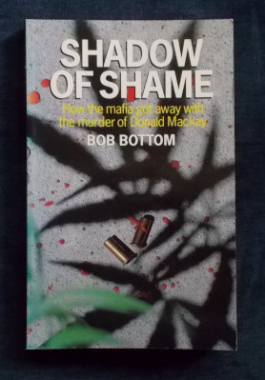
Shadow Of Shame: Bob Bottom
$12.00Donald Bruce MacKay, the Griffith anti-drugs campaigner, disappeared without trace from the carpark of the Griffith Hotel in July 1977. Mackay had been a secret informant for polce against illicit growing of marijuana growing in the Riverina area. His ‘disappearance’ became Australia’s first political assassination. This is the shocking story of how the mafia planned and executed his murder. Throughout the shameful decade that followed, some people, even at senior levels of politics and law enforcement, connived to cover up this mafia murder. Bob Bottom, a crime journalist, traces the birth and growth of the mafia in Griffith, known to police as a centre for serious crime as early as the 1930s. By the 1970s, when Mackay first became concerned about illicit drug activities in his town, those controlling organised crime had become far more sophisticated. Bribery, corruption and pay-offs had become commonplace. Serious questions about NSW police investigations into Australia’s most notorious murder precipitated a special commission of enquiry – nine years later...Bottom also details how drug boss Robert Trimbole lived safely in Spain despite international police knowledge of his whereabouts and of the failure of Australian authorities to bring him to justice. Illustrated with black and white photographs. -
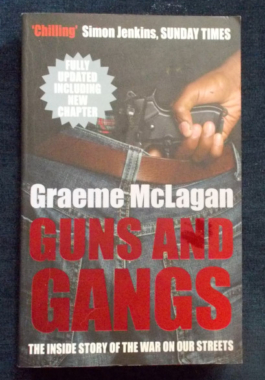 McLagan lifts the lid on a hugely important modern-day problem; an expensive both in terms of money and young lives. After terrorism, the single greatest worry for law enforcement agencies is gun crime and in particular 'black on black' shootings. McLagan has had exclusive access to police files and case histories. Together with his findings from these records are interviews with police officers, victims and their families, witnesses, lawyers and perpetrators of gun crime. The result is a unique and horrifying exposé of the disturbing truth behind this plague on the streets.
McLagan lifts the lid on a hugely important modern-day problem; an expensive both in terms of money and young lives. After terrorism, the single greatest worry for law enforcement agencies is gun crime and in particular 'black on black' shootings. McLagan has had exclusive access to police files and case histories. Together with his findings from these records are interviews with police officers, victims and their families, witnesses, lawyers and perpetrators of gun crime. The result is a unique and horrifying exposé of the disturbing truth behind this plague on the streets. -
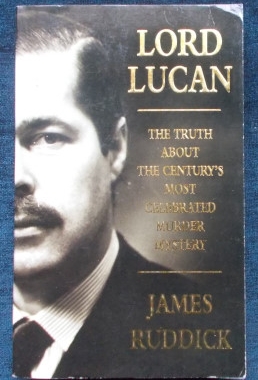
Lord Lucan: James Ruddick
$12.00This book promises the truth behind the century's most celebrated murder mystery. On a wintry night in November 1974, Sandra Rivett, nanny to the children of Lord and Lady Lucan, was brutally bludgeoned to death in the basement of their Belgravia home. Lady Lucan was also attacked and identified the attacker as her estranged husband, the 7th Earl of Lucan. That night, Lord Lucan vanished and has never been found, despite numerous sightings all over the world. The author has interviewed many of those involved, including, for the first time, Lord Lucan's wife Veronica. He gained access to the missing Earl's private papers, which yield remarkable new information. He also re-examines the forensic evidence and questions the key witnesses to produce the most likely explanation to date of what really happened on November 7, 1974. Illustrated with black and white photographs.
-
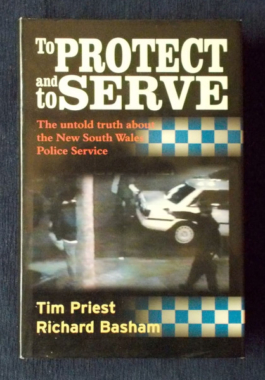 Almost every month in New South Wales, there are reports of police corruption and a police service under attack, from the criminals it tries to put away and the people it tries to protect and serve. Are the reports mere media sensationalism, or is the New South Wales Police in serious trouble? And if so, where did it go wrong? Priest was a cop who loved his job and gave everything he had to fight crime on the drug-ridden streets of Cabramatta. Yet he found his biggest battle was not with the drug gangs but with the very service he worked for. Eventually he could stand it no longer and spoke out about the bizarre policy decisions, politics, bureaucratic bungling and chronic lack of resources. For this he was labelled a whistle-blower and ultimately railroaded out of the police force. Yet a parlimentary enquiry and the testimony of other officers proved that Tim was not only telling the truth, but this was only the tip of the iceberg of what is really wrong with the New South Wales Police Force. While crime continues to spiral out of control, morale plummets among the rank and file police and experienced cops find they are at the mercy of a promotion system that leaves them nowhere to go but out. Tim teams up with Richard Basham, a man of vast experience through his involvement in a number of advisory boards, criminal investigations and personal friendships with ordinary cops, to reveal the untold story of the police service.
Almost every month in New South Wales, there are reports of police corruption and a police service under attack, from the criminals it tries to put away and the people it tries to protect and serve. Are the reports mere media sensationalism, or is the New South Wales Police in serious trouble? And if so, where did it go wrong? Priest was a cop who loved his job and gave everything he had to fight crime on the drug-ridden streets of Cabramatta. Yet he found his biggest battle was not with the drug gangs but with the very service he worked for. Eventually he could stand it no longer and spoke out about the bizarre policy decisions, politics, bureaucratic bungling and chronic lack of resources. For this he was labelled a whistle-blower and ultimately railroaded out of the police force. Yet a parlimentary enquiry and the testimony of other officers proved that Tim was not only telling the truth, but this was only the tip of the iceberg of what is really wrong with the New South Wales Police Force. While crime continues to spiral out of control, morale plummets among the rank and file police and experienced cops find they are at the mercy of a promotion system that leaves them nowhere to go but out. Tim teams up with Richard Basham, a man of vast experience through his involvement in a number of advisory boards, criminal investigations and personal friendships with ordinary cops, to reveal the untold story of the police service. -
 It can take years for love to turn to murderous hate - or it can happen overnight. What drives a woman or man to committ the ultimate betrayal - to take the life of a parent, a child, a sibling, a lover? This is a volume of unflicnhing exploration of fourteen well-known - and not so well-known - murder in the family cases and it takes the reader inside the life and mind of both the killer and victim. The cases include: The slaying of Maureen Thompson by her husband Rory; the murders of the four Folbigg children by their mother Kathleen; the sudden explosion of murderous rage within Sef Gonzales that resulted in the destruction of those closest to him; and more. Illustrated with black and white and colour photographs.
It can take years for love to turn to murderous hate - or it can happen overnight. What drives a woman or man to committ the ultimate betrayal - to take the life of a parent, a child, a sibling, a lover? This is a volume of unflicnhing exploration of fourteen well-known - and not so well-known - murder in the family cases and it takes the reader inside the life and mind of both the killer and victim. The cases include: The slaying of Maureen Thompson by her husband Rory; the murders of the four Folbigg children by their mother Kathleen; the sudden explosion of murderous rage within Sef Gonzales that resulted in the destruction of those closest to him; and more. Illustrated with black and white and colour photographs. -
 Discover surprising answers in this true-crime treasury of 100 of the most fascinating cases of all time. More than two centuries in the development of modern forensic procedures come to vivid life as everything from handwriting analyses and voiceprints to ballistics, DNA testing and psychological profiles reveal who did it - and, in some startling cases, who didn't do it. Categories: Ballistics; Cause Of Death; Disputed Documents; DNA Typing; Explosives And Fire; Fingerprinting; Forensic Anthropology; Odontology; Psychological Profiling; Identification Of Remains; Serology; Time Of Death; Trace Evidence; Voice Printing. The cases detailed herein range from the 189os to the 1990s. Illustrated with black and white photographs.
Discover surprising answers in this true-crime treasury of 100 of the most fascinating cases of all time. More than two centuries in the development of modern forensic procedures come to vivid life as everything from handwriting analyses and voiceprints to ballistics, DNA testing and psychological profiles reveal who did it - and, in some startling cases, who didn't do it. Categories: Ballistics; Cause Of Death; Disputed Documents; DNA Typing; Explosives And Fire; Fingerprinting; Forensic Anthropology; Odontology; Psychological Profiling; Identification Of Remains; Serology; Time Of Death; Trace Evidence; Voice Printing. The cases detailed herein range from the 189os to the 1990s. Illustrated with black and white photographs. -
 As the world goes about its daily business, criminals and cops engage in a deadly battle of wits. This book delves into the crimes that police have to deal with day after day. Murderers, hitmen, kidnappers, and drug dealers all feature in this collection of true crime stories. Take the drug dealer who walked out of a restaurant bragging that he's killed a man—unaware that his fellow diner was an undercover policeman. Or the young mother, whose death was written off as suicide, but which subsequent investigation proved to be something much more sinister.
As the world goes about its daily business, criminals and cops engage in a deadly battle of wits. This book delves into the crimes that police have to deal with day after day. Murderers, hitmen, kidnappers, and drug dealers all feature in this collection of true crime stories. Take the drug dealer who walked out of a restaurant bragging that he's killed a man—unaware that his fellow diner was an undercover policeman. Or the young mother, whose death was written off as suicide, but which subsequent investigation proved to be something much more sinister. -
 Jeffrey Dahmer, Ted Bundy, John Wayne Gacy, The Hillside Strangler . . . serial murderers are the most horrific of all criminals. Kate Kray, whose marriage to gangster Ronnie Kray offered her access to a gruesome underworld few would dare to enter, peers into the minds of the worst killers to reveal the awful truth of their abominable acts. The extreme nature of their violence and their shocking lack of remorse makes for uncomfortable yet fascinating reading. From obsessive sexual predators and extreme sadists to cannibals and head hunters, each type of psychopath is examined, their crimes told with grim frankness. Kate's connections allow her to ask uncomfortable questions few would dare to ask such men. Offering extraordinary insight into the motivations of violent perpetrators often portrayed as monsters, this book begs the question of whether such individuals can themselves be viewed as victims of a troubled past, or merely as exponents of pure evil.
Jeffrey Dahmer, Ted Bundy, John Wayne Gacy, The Hillside Strangler . . . serial murderers are the most horrific of all criminals. Kate Kray, whose marriage to gangster Ronnie Kray offered her access to a gruesome underworld few would dare to enter, peers into the minds of the worst killers to reveal the awful truth of their abominable acts. The extreme nature of their violence and their shocking lack of remorse makes for uncomfortable yet fascinating reading. From obsessive sexual predators and extreme sadists to cannibals and head hunters, each type of psychopath is examined, their crimes told with grim frankness. Kate's connections allow her to ask uncomfortable questions few would dare to ask such men. Offering extraordinary insight into the motivations of violent perpetrators often portrayed as monsters, this book begs the question of whether such individuals can themselves be viewed as victims of a troubled past, or merely as exponents of pure evil. -
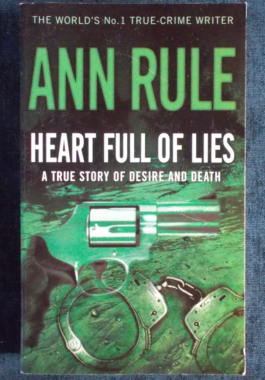
Heart Full Of Lies: Ann Rule
$10.00Liysa and Chris Norton seemed the perfect couple: Chris - tall, athletic and handsome, a pilot for Hawaiian Airlines; Liysa - attractive, seductive, an acclaimed surf photographer. Their son, Bjorn, looked just like his dad and they were raising Liysa's son by a previous marriage. They had beautiful homes on the mainland and in Hawaii. But soon after their idyllic marriage on a moonlit beach, Liysa revealed a rapacious side that Chris had not seen before, and she complained to her friends that Chris was a heavy drinker who beat her. Chris struggled to keep the marriage from unravelling but on a sunny morning in October 2000 he lay dead at a remote campsite. Liysa drove in distress to a friend's house - it appeared that she had been attacked and claimed that she had shot Chris in self-defence but the Oregon state detectives were suspicious of her account. Crime scene evidence led detectives to wonder if Liysa was a killer, not a victim. Her controversial trial stunned all who thought they knew her. A lifetime of sociopathic manipulations and lies had been expertly hidden behind her façade of perfection - as was her rage to destroy any obstacle to her ultimate happiness, even if it was the man she vowed to love forever. -
 The criminals who ended their days in Strangeways Prison - and the crimes that sent them there. A collection of murder cases from around Manchester each of which ends in the accused being executed at Strangeways Prison. Some of the accounts, at the end, feature an author's note in which suggests that perhaps the accused was innocent and should not have been hanged...Many a lot of these crimes are particularly shocking, evil and unmotivated. There is also a first-hand account written by Charles Parton, who was sentenced to death for murder and served 11 years before being found not guilty.
The criminals who ended their days in Strangeways Prison - and the crimes that sent them there. A collection of murder cases from around Manchester each of which ends in the accused being executed at Strangeways Prison. Some of the accounts, at the end, feature an author's note in which suggests that perhaps the accused was innocent and should not have been hanged...Many a lot of these crimes are particularly shocking, evil and unmotivated. There is also a first-hand account written by Charles Parton, who was sentenced to death for murder and served 11 years before being found not guilty. -
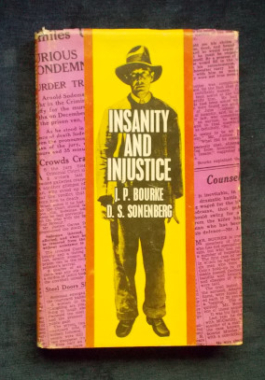 The case of Arnold Karl Soderman is one of the most remarkable in the criminal annals of 20th century Australia. No matter what angle - legal, medical or from the layman's point of view - it presents startling drama and raises challenging questions. The macabre story of the killing of four young children, one only six years old; the tragedy of two men charged with the crimes of which they were guiltless; the situation of a father confronted with an unfounded allegation of the ferocious murder of his daughter; the spectacle of honest witnesses mistakenly testifying as to the identity of an accused man so as to bring the object of their accusations within the shadow of the gallows; the fight for the life of the killer through the hierarchy of the Australian Court System up to the Privy Council; the decision to hang the accused, declared by two government doctor and another highly qualified psychiatrist to have been insane at the time of the killings; and the carrying out of the sentence all combine to make a story which calls for the telling. Co-author J.P. Bourke was Counsel for the Defence in this case 1935-1936
The case of Arnold Karl Soderman is one of the most remarkable in the criminal annals of 20th century Australia. No matter what angle - legal, medical or from the layman's point of view - it presents startling drama and raises challenging questions. The macabre story of the killing of four young children, one only six years old; the tragedy of two men charged with the crimes of which they were guiltless; the situation of a father confronted with an unfounded allegation of the ferocious murder of his daughter; the spectacle of honest witnesses mistakenly testifying as to the identity of an accused man so as to bring the object of their accusations within the shadow of the gallows; the fight for the life of the killer through the hierarchy of the Australian Court System up to the Privy Council; the decision to hang the accused, declared by two government doctor and another highly qualified psychiatrist to have been insane at the time of the killings; and the carrying out of the sentence all combine to make a story which calls for the telling. Co-author J.P. Bourke was Counsel for the Defence in this case 1935-1936 -
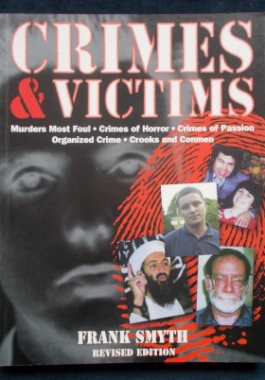
Revised Edition. Here are the true life stories of men and women who have shocked the world with their outrageous crimes - and those who have suffered and paid the price. Featured in this gallery of ultimate criminals: Dr, Crippen; Jeremy Bamber; The Boston Strangler; George Haigh; Snyder and Grey; Harold Shipman; Ted Bundy; Donald Neilson; Peter Sutcliffe; Ian Huntley; Dennis Nilsen; Fred and Rosemary West; Brady and Hindley; Ruth ellis; Sam Sheppard; The Krays; Al Capone; The Great Train Robbery; Osama Bin Laden; Timothy McVeigh; Ilich Ramirez Sanchez. Illustrated with haunting black and white photographs.
-
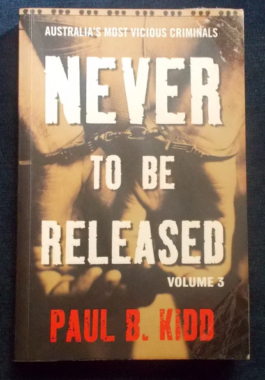 The third book in Kidd's chilling Never To Be Released series. Each year in Australia crimes are committed that are so evil their perpetrators are sentenced to the maximum punishment that the law allows. And seeing as there is no death penalty in any state of Australia, these worst-of-the-worst are sent to prison for life without the possibility of parole. It is termed 'never to be released'. To date, no criminal who has ever been handed down this sentence has been set free; they will die in jail as the law demands. But the fear of going to prison forever obviously does little to deter people from committing crimes of the most heinous nature. Kidd, a recognised authority on Australia's serial killers and criminals, looks at such cases as: the housewife who skinned her de-facto husband, cooked his head in a pot and served him up to his kids for dinner; a mild-mannered serial rapist and murderer who was so ordinary-looking that his victims trusted him immediately - time and time again; and a serial killer whose 'victim' turned up alive and well in the middle of his trial for her murder. Illustrated with black and white photographs.
The third book in Kidd's chilling Never To Be Released series. Each year in Australia crimes are committed that are so evil their perpetrators are sentenced to the maximum punishment that the law allows. And seeing as there is no death penalty in any state of Australia, these worst-of-the-worst are sent to prison for life without the possibility of parole. It is termed 'never to be released'. To date, no criminal who has ever been handed down this sentence has been set free; they will die in jail as the law demands. But the fear of going to prison forever obviously does little to deter people from committing crimes of the most heinous nature. Kidd, a recognised authority on Australia's serial killers and criminals, looks at such cases as: the housewife who skinned her de-facto husband, cooked his head in a pot and served him up to his kids for dinner; a mild-mannered serial rapist and murderer who was so ordinary-looking that his victims trusted him immediately - time and time again; and a serial killer whose 'victim' turned up alive and well in the middle of his trial for her murder. Illustrated with black and white photographs. -
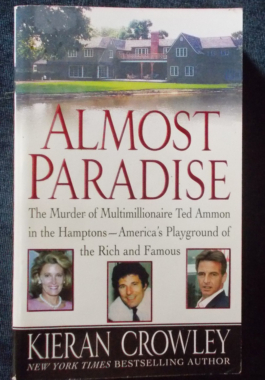 He was a multimillionaire but even his wealth and power could not save him. On October 22, 2001, handsome multimillionaire financier Ted Ammon was found bludgeoned to death in the magnificent East Hampton mansion he'd built with his beautiful - and volatile - wife, Generosa. She stood to make millions, but it wasn't the money that made Ted's friends suspicious: Generosa Ammon had a history of violent outbursts and bizarre obsessions. A talented interior decorator, Generosa had fashioned a lavish lifestyle for her husband and their two children, divided between Fifth Avenue, the Long Island estate, and a manor house in England. But when Generosa discovered Ted had a mistress, her demons were unleashed and she began a very public affair with Danny Pelosi, a strikingly handsome womaniser who was also her electrician. She called him her "tool belt guy." But he was also an ex-con who was suspected of playing a pivotal role in Ted's murder and the final destruction of a once-perfect family. Illustrated with photographs.
He was a multimillionaire but even his wealth and power could not save him. On October 22, 2001, handsome multimillionaire financier Ted Ammon was found bludgeoned to death in the magnificent East Hampton mansion he'd built with his beautiful - and volatile - wife, Generosa. She stood to make millions, but it wasn't the money that made Ted's friends suspicious: Generosa Ammon had a history of violent outbursts and bizarre obsessions. A talented interior decorator, Generosa had fashioned a lavish lifestyle for her husband and their two children, divided between Fifth Avenue, the Long Island estate, and a manor house in England. But when Generosa discovered Ted had a mistress, her demons were unleashed and she began a very public affair with Danny Pelosi, a strikingly handsome womaniser who was also her electrician. She called him her "tool belt guy." But he was also an ex-con who was suspected of playing a pivotal role in Ted's murder and the final destruction of a once-perfect family. Illustrated with photographs.





